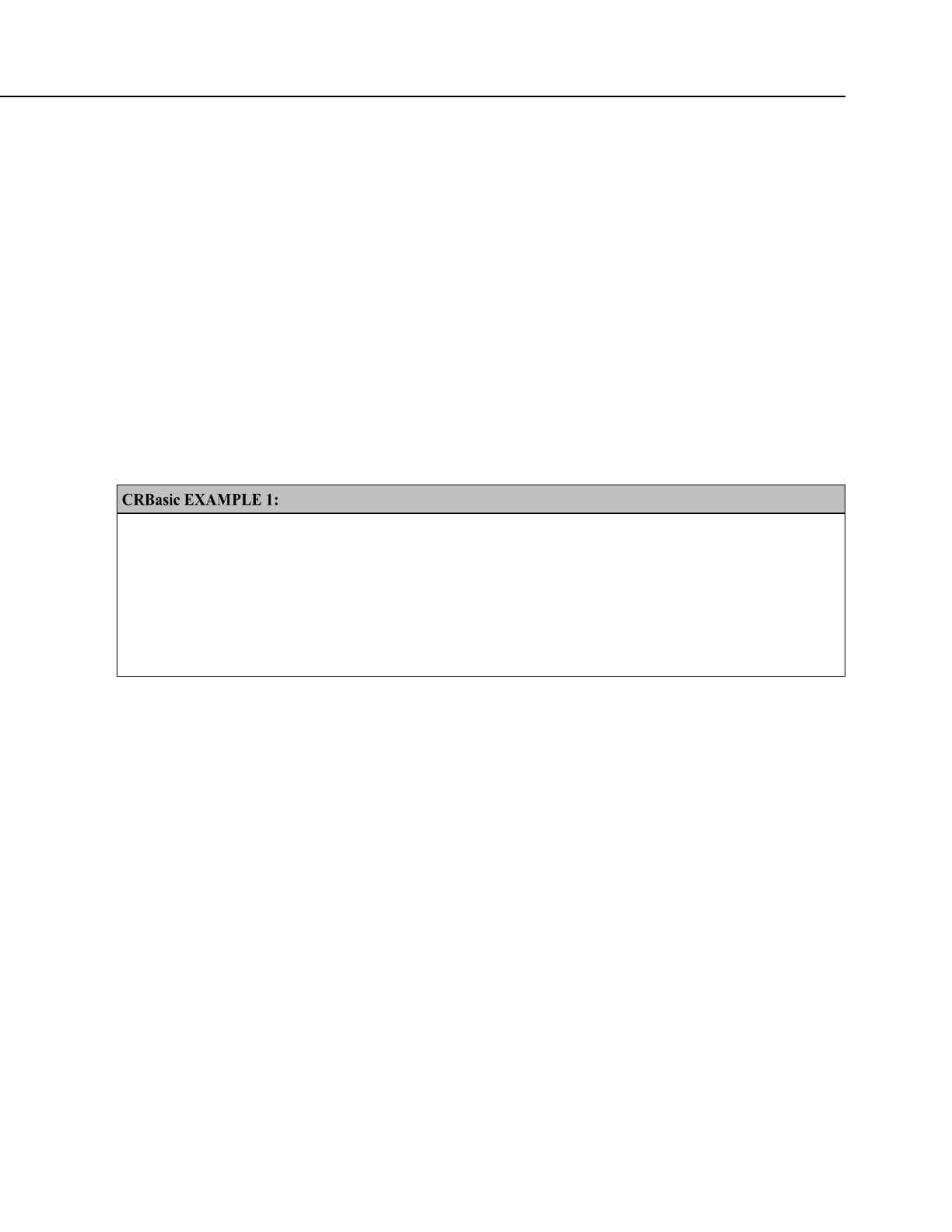Section 7. Installation
7.5.1.5.1 Default.cr8 File
A file named default.cr8 can be stored on the CR800 CPU: drive. At power up,
the CR800 loads default.cr8 if no other program takes priority (see Executable
File Run Priorities
(p. 112)). Default.cr8 can be edited to preserve critical
datalogger settings such as communication settings, but cannot be more than a
few lines of code.
Downloading operating systems over comms requires much of the available
CR800 memory. If the intent is to load operating systems via a comms link, and
have a default.cr8 file in the CR800, the default.cr8 program should not allocate
significant memory, as might happen by allocating a large USR: drive. Do not
use a DataTable() instruction set for auto allocation of memory, either. Refer to
Operating System — Installation
(p. 113) for information about sending the
operating system.
Execution of default.cr8 at power-up can be aborted by holding down the DEL
key on the CR1000KD Keyboard/Display.
Simple Default.cr8 File to Control SW12 Terminal
'This program example demonstrates use of a Default.cr8 file. It must be restricted
'to few lines of code. This program controls the SW12 switched power terminal, which
'may be helpful in assuring that the default power state of a remote modem is ON.
BeginProg
Scan(1,Sec,0,0)
If TimeIntoInterval(15,60,Sec) Then SW12(1)
If TimeIntoInterval(45,60,Sec) Then SW12(0)
NextScan
7.5.1.5.2 "Include" File
An alternative to a subroutine is an 'include' file. An 'include' file is a CRBasic
program file that resides on the CR800 CPU: drive and compiles as an insert to
the CRBasic program. It may also run on its own
(p. 112). It is essentially a
subroutine stored in a file separate from the main program file. It can be used
once or multiple times by the main program, and by multiple programs. The file
begins with the SlowSequence instruction and can contain any code.
Procedure to use the "Include File":
1. Write the file, beginning with the SlowSequence instruction followed by any
other code.
2. Send the file to the CR800 using tools in the File Control menu of datalogger
support software
(p. 86).
3. Enter the path and name of the file in the Include File setting using DevConfig
or PakBusGraph.
Figures "Include File" Settings With DevConfig
(p. 110) and "Include File" Settings
With PakBusGraph
(p. 111) show methods to set required settings with DevConfig

